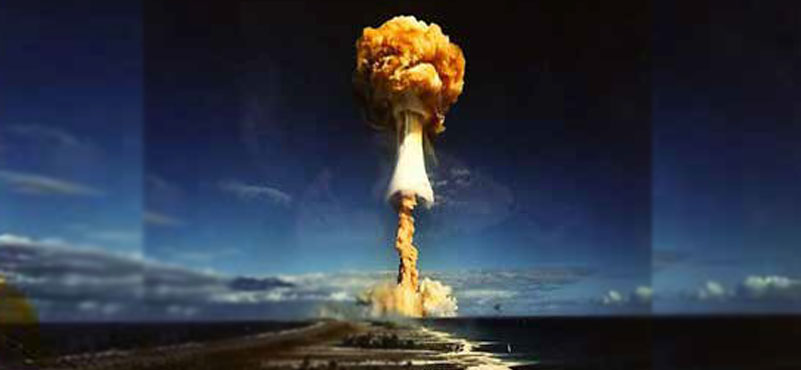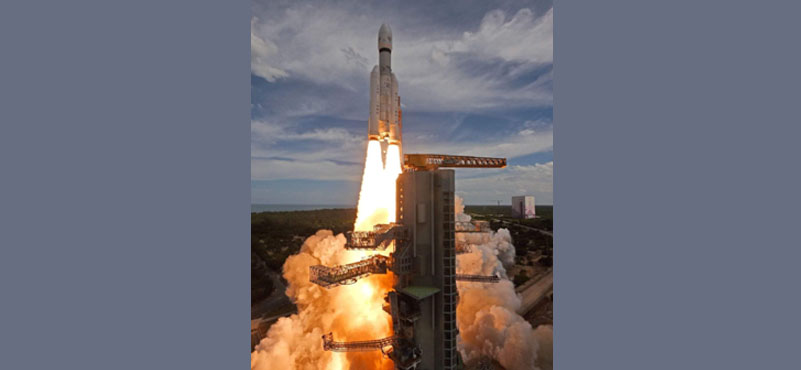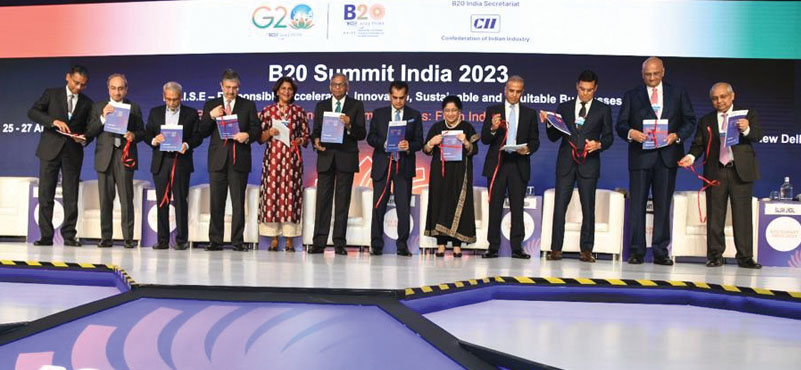Introduction
The Stockholm International Peace Research Institute’s (SIPRI) annual Yearbook 2023 assessment of the state of armaments, disarmament, and international security highlighted that the number of operational nuclear weapons had started to rise. Nuclear arms control and disarmament diplomacy has suffered major setbacks due to the Russia-Ukraine conflict, with USA and Russia suspending bilateral strategic stability dialogues. As per Dan Smith, SIPRI Director, it is a period of high geopolitical tension and mistrust, where risks of miscalculation, misunderstanding or accident are unacceptably high, he said ‘there is an urgent need to restore nuclear diplomacy and strengthen international controls on nuclear arms.’
Even in such an environment India’s nuclear programme is viewed with complete trust and respect. 25 years have passed since the Pokhran-II tests. India has clearly emerged as a responsible nation with a stable nuclear doctrine. With noteworthy advancements such as the Agni-V/VI missiles and the S-4, India’s third indigenous nuclear ballistic missile submarine, India has established its triad capabilities.
On the other hand, our Western neighbour repeatedly makes bold statements with reference to its nuclear strategy and response. It retains the option of ‘First Use’ and does not hesitate to raise the bogey. Its nuclear policy is vague and ambiguous. It also has no hesitation in turning around on a previously taken stance and even in peaceful scenarios where there is no perceived threat, it brings up the nuclear issue, in national/international forums, to keep the nuclear card alive.
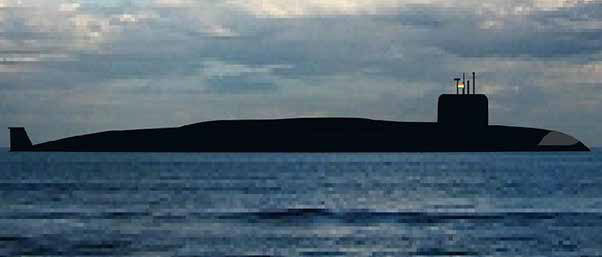 Recently, while talking at the Institute of Strategic Studies, Islamabad, on 24 May 2023, to celebrate the 25th Anniversary of Pakistan’s nuclear test Lieutenant General Khalid Kidwai (Retd), currently an Advisor to Pakistan’s National Command Authority, reiterated some of the long-standing positions of Pakistan’s nuclear policy, such as the strength of its nuclear triad reliant on Land, Air, and Sea-based capabilities. He also discussed full-spectrum deterrence. In his words, full-spectrum deterrence “comprises horizontally of a robust Tri-Services inventory of a variety of nuclear weapons held on land, sea and in the air.” Vertical deterrence covers strategic, operational, and tactical ranges. However, what stood out in his statement was that “vertically the spectrum encapsulates adequate range coverage from 0 meters to 2,750 Km as well as nuclear weapons destructive yields at three tiers-strategic, operational, and tactical.”
Recently, while talking at the Institute of Strategic Studies, Islamabad, on 24 May 2023, to celebrate the 25th Anniversary of Pakistan’s nuclear test Lieutenant General Khalid Kidwai (Retd), currently an Advisor to Pakistan’s National Command Authority, reiterated some of the long-standing positions of Pakistan’s nuclear policy, such as the strength of its nuclear triad reliant on Land, Air, and Sea-based capabilities. He also discussed full-spectrum deterrence. In his words, full-spectrum deterrence “comprises horizontally of a robust Tri-Services inventory of a variety of nuclear weapons held on land, sea and in the air.” Vertical deterrence covers strategic, operational, and tactical ranges. However, what stood out in his statement was that “vertically the spectrum encapsulates adequate range coverage from 0 meters to 2,750 Km as well as nuclear weapons destructive yields at three tiers-strategic, operational, and tactical.”
Nuclear Warfighting Has No Precedence. Hiroshima and Nagasaki cannot be counted as a precedence. That was a case of the Atom Bomb versus the Samurai, a highly unmatched proposition and in hindsight, highly unwarranted. However, it did expose the power and devastation of the bomb. There has been no incidence of two nuclear nations going to war using nuclear weapons against each other.
In view of the above it is necessary to analyse the Indian Nuclear Strategy in the regional context.
Deciphering Indiaʼs Nuclear Doctrine
Undoubtedly the use of nuclear weapons constitutes the gravest threat to humanity and to peace and stability in the international system. However, India had no choice but to opt for this option keeping in view the hostile nature and unreliability of its neighbours.
Autonomy of decision making in the developmental process and in strategic matters is an inalienable democratic right of the Indian people. India had to strenuously guard this right in a world where nuclear weapons for a select few were sought to be legitimised for an indefinite future, and where there was growing complexity and frequency in the use of force for political purposes.
Apropos, on 17 August 1999, Indian National Security Advisor, Brajesh Mishra released a Draft Nuclear Doctrine which was then further refined by the Cabinet Committee on Security in January 2003.
Protecting the Indian State, from the use or threat of use of nuclear weapons by any State or entity, was the raison d’être of India’s nuclear deterrent. The fundamental purpose of India’s nuclear weapons was that they were meant only for self-defence. To deter the use and threat of use of nuclear weapons by any State or entity against India and its forces. India will not be the first to initiate a nuclear strike, but will respond with punitive retaliation should deterrence fail. The main features of India’s nuclear doctrine were as follows:
(a) Building and maintaining a Credible Minimum Deterrent;
(b) A “No First Use” posture; nuclear weapons to be used only “in retaliation against a nuclear attack on Indian territory or on Indian Forces anywhere;”
(c) Nuclear retaliation to a First Strike will be “massive” and designed to inflict “Unacceptable Damage.”
(d) Nuclear retaliatory attacks to be authorized only by civilian political leadership through the Nuclear Command Authority.
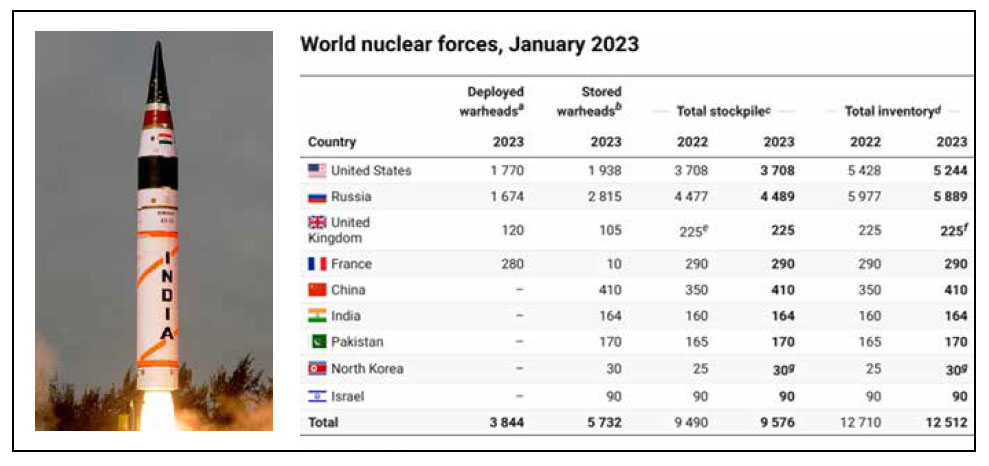
(e) Non- use of nuclear weapons against non-nuclear weapon states.
(f) India to retain option of retaliating with nuclear weapons in the event of a major attack against it with Biological or Chemical Weapons;
(g) Continuance of strict controls on export of nuclear and missile related materials and technologies, participation in FMCT negotiations, continued moratorium on testing;
(h) Continued commitment to goal of Nuclear Weapon Free World, through global, verifiable, and non-discriminatory disarmament.
Credible Minimum Deterrence
While every sub clause is important, the start point is the factor “CREDIBLE.” If an adversary uses nuclear weapons against India, then he must know that India can and will retaliate with sufficient nuclear weapons to inflict destruction and punishment that the aggressor will find unacceptable. Several factors come into play to ensure credibility. These can be listed as three specific components, technological credibility, force credibility, and leadership credibility.
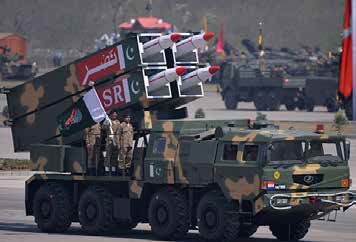 Simply defined, technological credibility means that, when the time comes, the bomb must work, and that too effectively. Force credibility means that there must be adequate numbers to create the requisite deterrence and these must survive the first onslaught, to be effectively launched. Leadership credibility is the political resolve to use the weapon, when called upon to take the decision. These three factors define the simplistic survivability effectiveness formula.
Simply defined, technological credibility means that, when the time comes, the bomb must work, and that too effectively. Force credibility means that there must be adequate numbers to create the requisite deterrence and these must survive the first onslaught, to be effectively launched. Leadership credibility is the political resolve to use the weapon, when called upon to take the decision. These three factors define the simplistic survivability effectiveness formula.
For example, force credibility includes its technological and operational aspects, while technological credibility underwrites the entire edifice of credibility. With technological capability in doubt, neither survivability nor effectiveness would be credible. No level of ‘survivability and effectiveness’ can compensate for weak and irresolute leadership; hence leadership credibility has been stressed in the expectation of their resolve.
Safety and survivability have been achieved by separating the warheads from the delivery systems, but this would retard effectiveness unless it is ensured that their mating can be guaranteed at will and in the specified time. The concept of force credibility ensures that the confusion associated with dispersal, survivability, and effectiveness, which may work at cross purposes, are integrated together into a synergistic whole. The above factors define the very concept of nuclear warfighting. If all these factors are in place and credible, then deterrence is in place and if deterrence is in place, then Lieutenant General Khalid Kidwai can keep talking about his 0-2750 theory, but he is only bluffing himself as rhetoric without adequate capabilities/mechanisms.
Command and Control
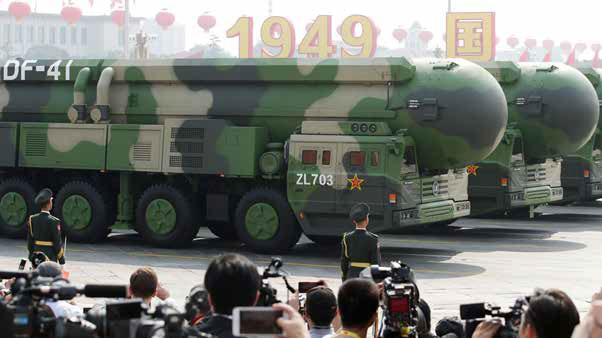 India’s Nuclear Forces and their command and control have been organised for very high survivability against surprise attacks and for rapid punitive response. They have been designed and deployed to ensure survival against a first strike and to endure repetitive attrition attempts with adequate retaliatory capabilities for a punishing strike which would be unacceptable to the aggressor. Procedures for the continuity of nuclear command and control shall ensure a continuing capability to effectively employ nuclear weapons.
India’s Nuclear Forces and their command and control have been organised for very high survivability against surprise attacks and for rapid punitive response. They have been designed and deployed to ensure survival against a first strike and to endure repetitive attrition attempts with adequate retaliatory capabilities for a punishing strike which would be unacceptable to the aggressor. Procedures for the continuity of nuclear command and control shall ensure a continuing capability to effectively employ nuclear weapons.
Massive Retaliation
To understand the retaliation aspect, one needs to visualise as to how will this nuclear warfighting will really happen. Our mindset will take us to Hiroshima, which was one bomb at a time. This may not be so. In consonance with our stated policy to inflict unacceptable damage to the aggressor, there may be a requirement to launch numerous strikes, possibly employing the multiple independently targetable re-entry vehicles (MIRV). Accordingly, a sizeable nuclear weapons arsenal is essential, as we need to factor in the possibility that the same would undergo a substantial degradation, despite all precautions, in a first strike, that some of our own attacks could be negated by defensive measures and above all what we must inflict is “massive” and “unacceptable damage.”
The survivability of our nuclear forces would have to be ensured by a combination of multiple redundant systems, mobility, dispersion, and deception. This also requires that India’s Nuclear Forces are based on a triad of aircraft, mobile land-based missiles, and sea-based assets. Thus, the Indian deterrent shall remain credible against all categories of weapons of mass destruction.
Having articulated an abridged version of the Indian Nuclear Doctrine with interpretation of some relevant portions, one realises the depth of the Indian Doctrine. This is the precise reason that any amount of sabre rattling, 0-2750 or threat of use of tactical nuclear weapons, has no effect on a robust policy. In fact, how does a tactical nuclear weapon make a difference?
In the movie ‘Where Eagles Dare,’ one of the British paratroopers is reported shot dead with a hole in the head. Richard Burton asks the carrier of the news, what hole was it, a British hole, or a German hole? The messenger responds, a hole, is a hole, is a hole. Similarly, a nuclear strike, is a nuclear strike, is a nuclear strike and will be responded to as per the stated policy of massive retaliation, the yield notwithstanding. For that matter the unfortunate soldier who vaporised due to the strike will never know what killed him, whether it was a tactical nuclear weapon or a 50 KT fusion bomb. And it really does not matter, because he died anyway, and both options would be responded to with massive retaliation.
Pakistan’s claims that their nuclear programme is purely India centric and the 2750 Km range is to cater for India’s farthest island territories. The shallowness of such a claim is rubbished because a missile does not fly only in one direction. It flies wherever it is programmed to fly, and if you change the direction of the missile, from 2750 Km South-East of Pakistan, to 2750 Km West, the missile will arrive in Israel, and similarly it can land in so many other countries in the region as 2750 Km is the radius. Therefore, an unreliable nuclear programme such as Pakistan’s is a matter of grave concern to regional security.
The Zero the General refers to in his 0-2750 statement, is obviously to do with range, and Zero range is possible only within Pakistan. He, therefore is alluding to attack on foreign troops on Pakistani soil. However, it makes no change to India’s response because the Indian Doctrine clearly states, that any nuclear attack on India in its territory or on its forces anywhere, will result in massive counter strikes to inflict unacceptable damage to the aggressor.
Another aspect or doubt keeps cropping up time and again, as to how safe are the nuclear warheads in Pakistan. Can they fall into the hands of the Jihadis or other non-state actors? The response to such a doubt is twofold. Firstly, a nuclear weapon system is a technological marvel that needs special platforms for launch. It also possibly requires series of codes to be meshed in the motherboard for the chain reaction to start. A fusion/fission bomb is not a Diwali Sutli bomb or a Bhim Pataka that you light and throw across the fence. It is nearly impossible to trigger such a weapon without the technological support system. Secondly, if any undesirable element is threatening the use of such a weapon, then it is obviously with inside infrastructural support. Further, the weapon comes from the Pakistani stockpile, for which Pakistan is responsible. There will be no change to the Indian narrative, if there is any such attempt, it will be directly attributable to the State of Pakistan, and the response will be, as stated, massive.
By constantly developing nuclear weapons which they know they cannot use and a conventional Army that has failed to win any War, Pakistan has chosen the path of relying on the use of terrorism under the nuclear umbrella as its stated policy for achieving its strategic goals. The sword and shield strategy is what they feel will give them security, the sword being terrorism and the strategic shield being nuclear weapons. An unwise and unsustainable strategy.
Our Other Neighbour
SIPRI’s estimate of the size of China’s nuclear arsenal increased from 350 warheads in January 2022 to 410 in January 2023, and it is expected to keep growing. Depending on how it decides to structure its forces, China could potentially have at least as many intercontinental ballistic missiles (ICBMs) as either the USA or Russia by the turn of the decade. China’s primary concern when it developed its nuclear weapons was to prevent its enemies from imposing war on China. Earlier, China believed that it faced nuclear threats from both superpowers and that was the underlying theme for their nuclear programme. However, once it developed and tested nuclear weapons, China has maintained that these weapons must be banned and destroyed. China has also committed itself to never being the first to use nuclear weapons at any time and under any circumstance.
Chinese Nuclear Force is one of the most important pillars of China’s Armed Forces, which are well trained and effective. China’s policy of nuclear weapons deployment is to maintain retaliatory-strike capability. They excel in their infrastructure, which is so well developed that troops can live in the underground bunkers. The weapon systems are deployed deep in the ocean and ground to be able to sustain any kind of strike and still be capable of retaliation.
Overall, the Chinese stance sounds appropriate and responsible. The catch remains, trust and reliability, which in both cases is woefully suspect, as shown by the Chinese, time and again along the Line of Actual Control. However, in the Indian context our doctrine is firm and resolute. With the development of Agni V and VI with MIRV capability, required ranges have been achieved for requisite deterrence against China.
Conclusion
There is always the counter argument. Ethically, the punishing of a whole nation for the decisions of its leadership is unsustainable. Moreover, executing massive retaliation would expose any nation to international isolation. The pursuit of diplomacy during a period of high tension will also erode the credibility of a massive response posture, since it signals a willingness to negotiate.
Therefore, when you possess such weapons, you must also possess the resolve. The firmer your resolve, the stronger your deterrence, and the stronger your deterrence, the safer is your country. Overall, the Indian Nuclear Doctrine is very comprehensive giving adequate room for flexibility to the Prime Minister. It also sends a clear message of resolve, strength, and capability to the enemy. Nuclear weapons are weapons of war. They are offensive weapons that can cause tremendous damage. When one makes such weapons, one should understand the devastation they can create. One should also be willing to accept such devastation on one’s self too.
ABOUT THE AUTHORS
 Maj Gen VK Singh, VSM was commissioned into The Scinde Horse in Dec 1983. The officer has commanded an Independent Recce Sqn in the desert sector, and has the distinction of being the first Armoured Corps Officer to command an Assam Rifles Battalion in Counter Insurgency Operations in Manipur and Nagaland, as well as the first General Cadre Officer to command a Strategic Forces Brigade. He then commanded 12 Infantry Division (RAPID) in Western Sector. The General is a fourth generation army officer.
Maj Gen VK Singh, VSM was commissioned into The Scinde Horse in Dec 1983. The officer has commanded an Independent Recce Sqn in the desert sector, and has the distinction of being the first Armoured Corps Officer to command an Assam Rifles Battalion in Counter Insurgency Operations in Manipur and Nagaland, as well as the first General Cadre Officer to command a Strategic Forces Brigade. He then commanded 12 Infantry Division (RAPID) in Western Sector. The General is a fourth generation army officer.
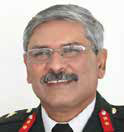 Major General Jagatbir Singh was commissioned into 18 Cavalry in December 1981. During his 38 years of service in the Army he has held various command, staff and instructional appointments and served in varied terrains in the country. He has served in a United Nations Peace Keeping Mission as a Military Observer in Iraq and Kuwait. He has been an instructor to Indian Military Academy and the Defence Services Staff College, Wellington. He is a prolific writer in defence & national security and adept at public speaking.
Major General Jagatbir Singh was commissioned into 18 Cavalry in December 1981. During his 38 years of service in the Army he has held various command, staff and instructional appointments and served in varied terrains in the country. He has served in a United Nations Peace Keeping Mission as a Military Observer in Iraq and Kuwait. He has been an instructor to Indian Military Academy and the Defence Services Staff College, Wellington. He is a prolific writer in defence & national security and adept at public speaking.

